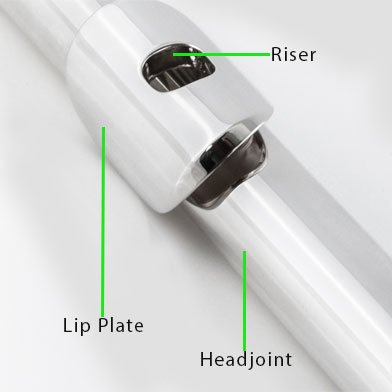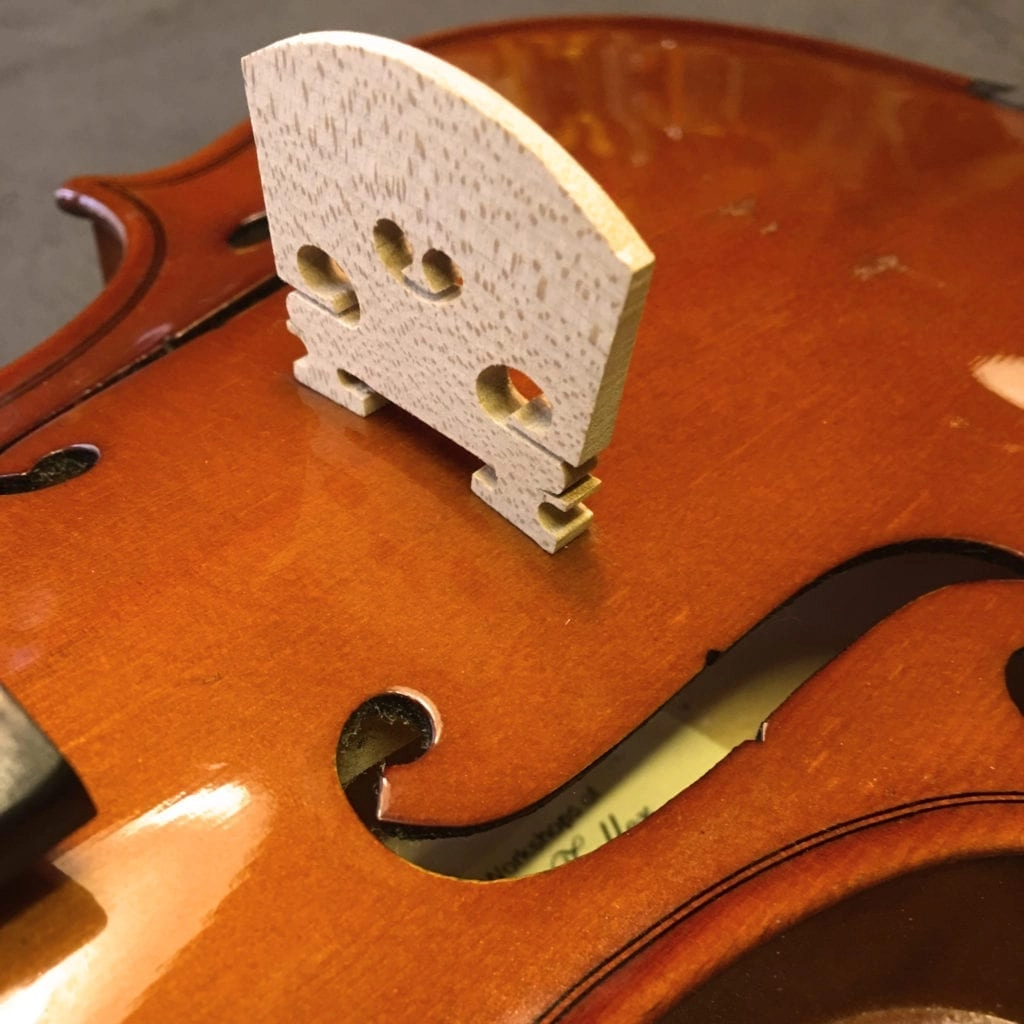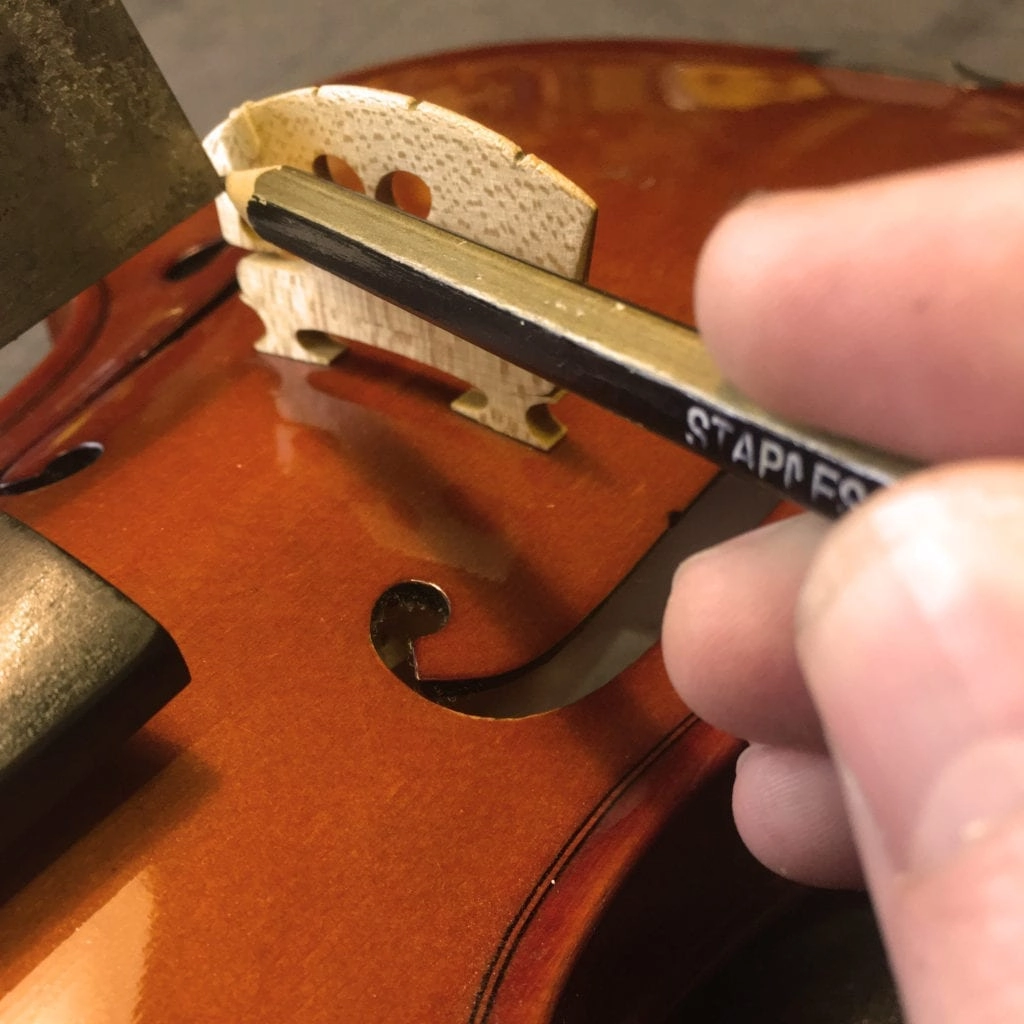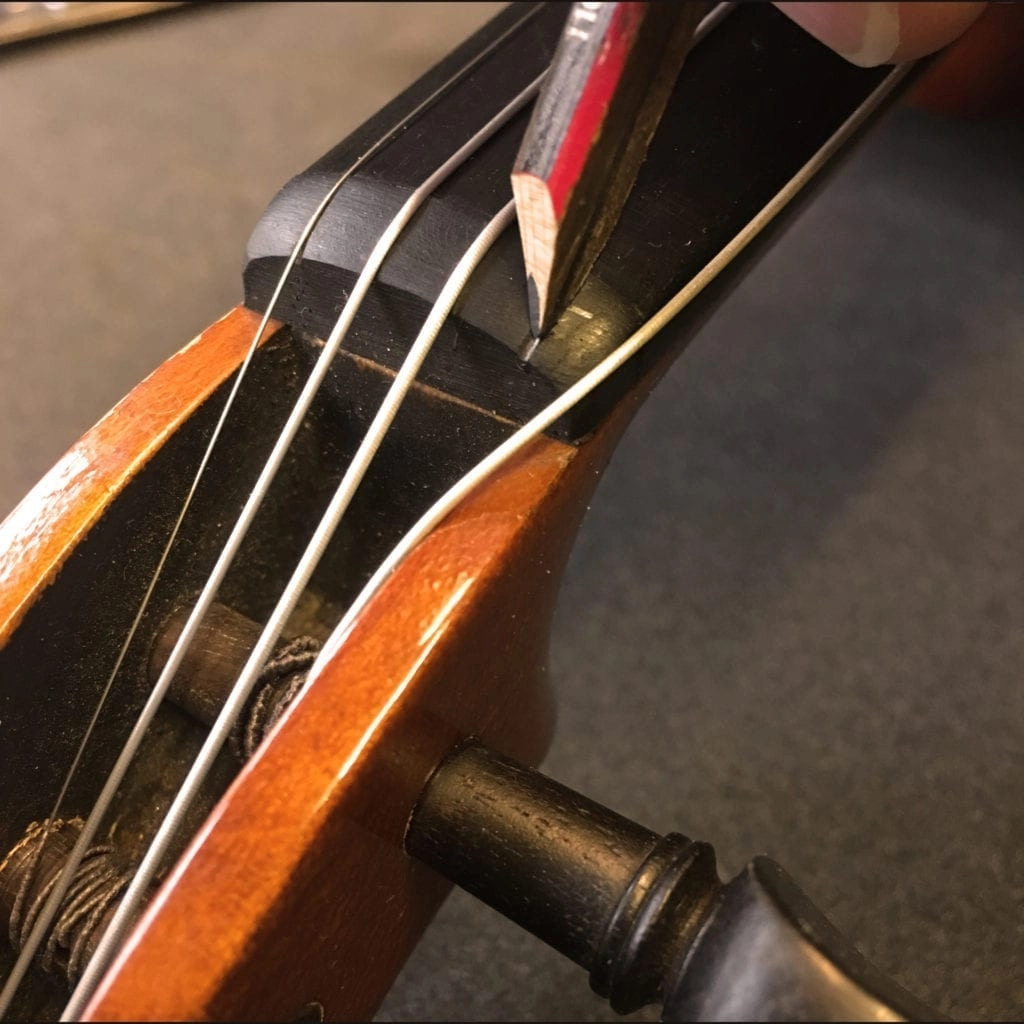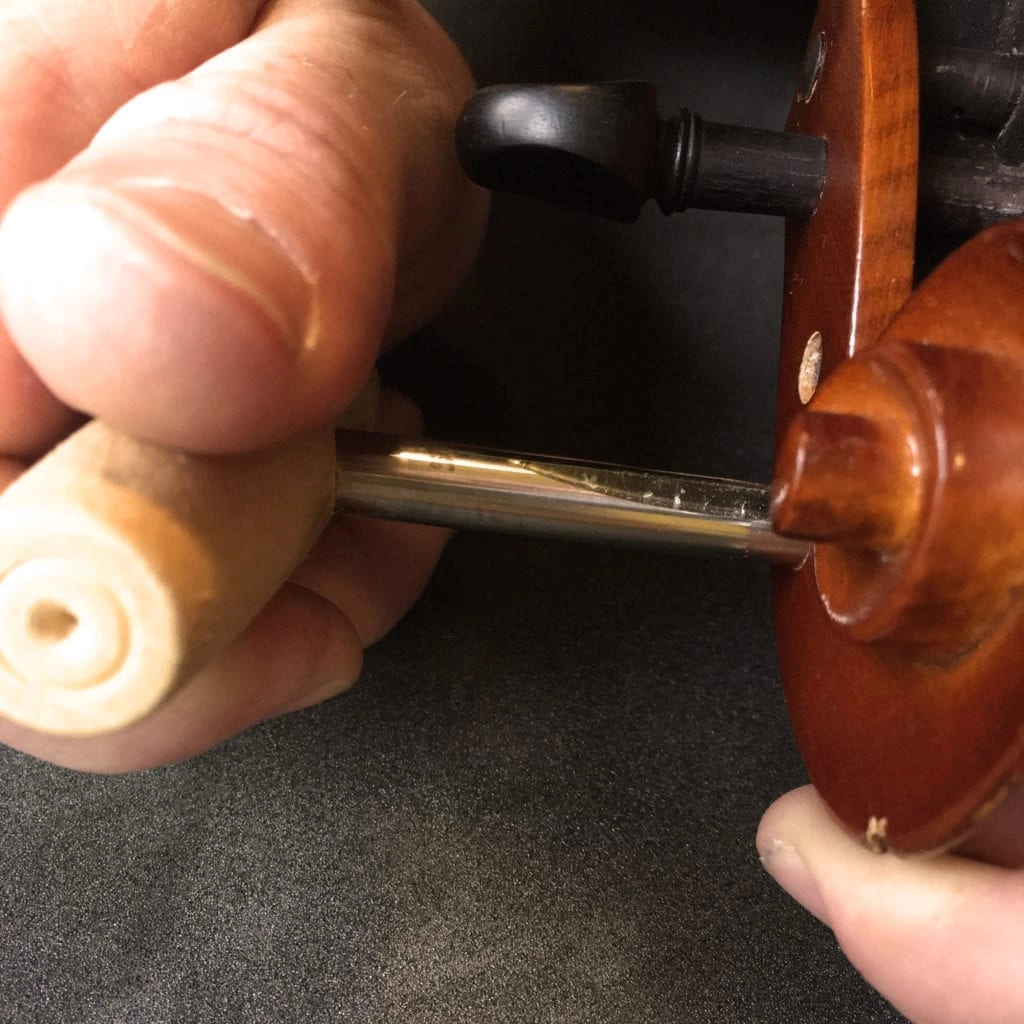If you browse the selection of guitars either instore or online, you could be forgiven for getting a little confused! There is a massive range of guitars available, all different prices, sizes, specifications and timbers. To help you out, we've put together a short Acoustic Guitar buyers' guide.
Other relevant pages:
- A detailed explanation of acoustic guitar set-ups
- A glossary of acoustic guitar language, standard measurements and tonewoods
- Shop for acoustic guitars in our online store
- Contact us
The Importance of a Set-Up
Many guitar shops don't do any set-up work on their instruments. Some will try to persuade you that it's not necessary, but in our experience this just isn't true!
Why? If you pick up most guitars "straight from the box", you will often find they are uncomfortable to play. In many cases, the strings are a long way from the fretboard, making it hard work to hold them down, and causing a fretted chord to sound out of tune even if the open strings are tuned correctly.
Sometimes the strings are too close to the fingerboard, causing fret-buzz and unwanted rattling noises, and sometimes there are rough fret ends that dig into your fingers. Occasionally there are more serious problems, where a well-trained eye will spot that the guitar is not fit for sale and needs to be returned to the manufacturer.
For more information, see our acoustic guitar set-up page.
Acoustic or Electro-Acoustic?
A good first step is to decide whether you want a guitar fitted with a pickup so that you can play through an acoustic amplifier or PA system. Many players like to plug in their guitar so that they can use effects units, or to play with a band, in a church or just with friends.
It is much cheaper to buy a guitar with a good pickup system fitted when the guitar is made than to fit one afterwards - so now is a good time to think about it!
Size and Shape

Most guitars can be categorised as one of 4 basic shapes.
- Dreadnought
This is the classic acoustic guitar shape developed in the 1920's by the Martin Guitar company, and even today, probably 75% of acoustic guitars are derived from this design. Square in shape, the large body gives plenty of volume and projection, but the wide 'waist' tends to make dreadnought guitars feel relatively bulky when rested on the knee, and some smaller players (particularly women) find them uncomfortable to play. - Grand Auditorium
Rapidly becoming the best selling guitar shape. The larger body is good for depth of tone, the narrow waist makes it very comfortable. This shape gives great balance between bass and treble, making it a good choice for an Electro Acoustic, and adapts well to Fingerstyle as well as Strumming styles. The Grand Auditorium is very versatile, and is often the perfect shape for a player who wants one guitar to fulfill all their requirements. - Grand Concert (Small bodied / Folk size)
As well as having a small body size, these guitars are often fairly shallow in depth. They are often still surprisingly loud, but unless they are in the higher price range, usually do not have such a warm tone as their larger cousins. Preferred by some smaller players, who find them more comfortable, the tone of small bodied guitars - often described as "tight", "springy", "lively" or "bright" - also makes them a popular choice for ragtime and fingerstyle blues players. - Jumbo
The largest of the standard shapes, with a big, deep open sound favoured by many for country styles. Made famous by Gibson, whose model J200 was used in the 50's and 60's by some of the greats, including Elvis Presley and the Everly Brothers.
Along with these shapes, there is the added option of having a Cutaway body.
These are very popular on electro-acoustics. A cutaway body gives the player easier access to the highest frets on the guitar. Guitarists who mainly play electric guitar often prefer acoustic guitars with a cutaway, as do Jazz players. Some acoustic guitar purists argue that a cutaway diminishes the acoustic quality of a guitar. As always, the acid test is to play the guitar - if you like it, that's all that matters!
Not all guitars follow these standard shapes. One thing to bear in mind is that, with the more unusual body shapes, it can sometimes be difficult to find a hard case that fits the guitar, unless the manufacturer supplies one.
Some other body shapes include:
- Parlour Guitars
Popular with some ragtime / blues player. A small, narrow body, but with a standard depth. Usually combined with a 12-fret neck - for more information see our article on 14-fret and 12-fret necks - Travel Guitars
Small guitars designed to be easy to carry around. They come in different shapes and sizes, from scaled down dreadnoughts (eg the Baby Taylor) to the tiny Martin Backpacker. They tend to have a short scale length (see below), some are even small enough to be taken on an aeroplane as hand luggage. - 12-Fret Necks
Some dreadnought, grand auditorium and grand concert size guitars have an elongated body that joins on to the guitar's neck at the 12th fret (the neck of most modern guitars joins at the 14th fret). Some fingerstyle players prefer the tone of these guitars - for more information see our article on 14-fret and 12-fret necks. - Slim-Bodied Guitars
Many Electro Acoustics are made with a shallower body depth. Although they generally don't have the volume or richness of tone of a full-bodied acoustic when unplugged, they tend to be more comfortable to play standing up, and are particularly popular with electric guitarists. - Bowl-Back Guitars
Originally made popular by Ovation, these guitars have a rounded back and sides normally made from fibreglass or plastic. Generally considered to be a bit out-of-fashion these days, but there are still a good few die-hard bowlback players out there who swear by them!
Solid Top or Laminate Top
First of all, a health warning - don't let any of the following information override what your eyes and ears tell you about a guitar! Not every solid top guitar is wonderful, and not every laminate top guitar is bad. Now read on...
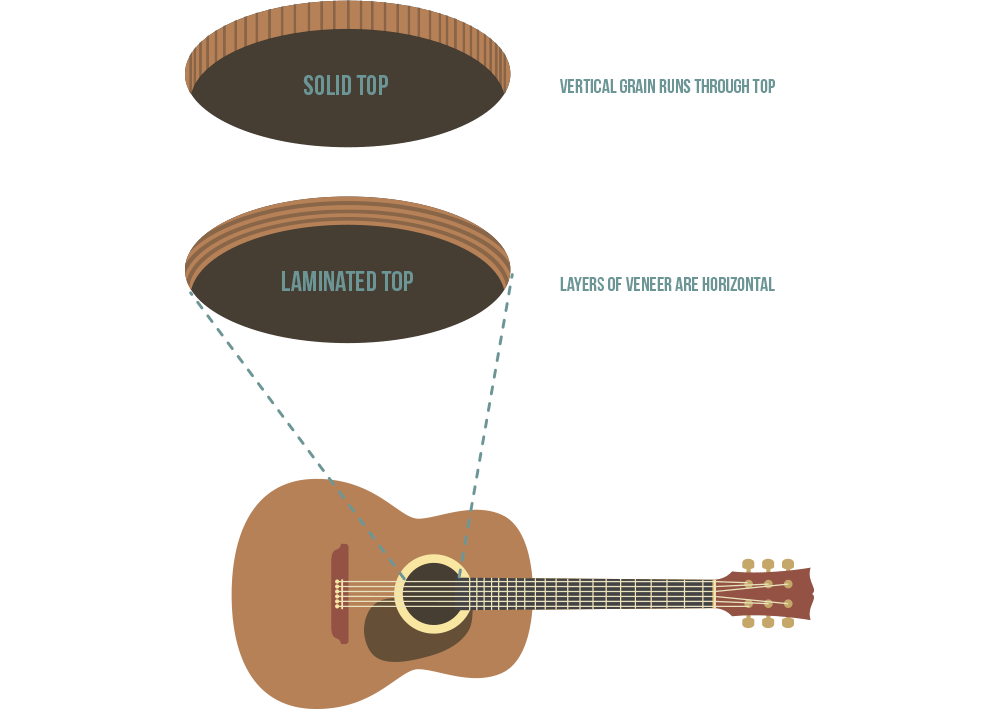
Acoustic guitars were designed to be made out of solid woods. The top of the guitar is normally constructed from a block of quarter sawn timber, which is then split and opened like a book (bookmatched), then glued together to make one piece.
The top is very strong along the grain and very flexible across the grain. Struts of wood known as the bracing are glued to the underside to add strength, and transmit vibrations from the strings across the grain. The vibrating top then radiates the sound out from the guitar to the listener.
Solid tops tend to start out with a better tone, but they are still stiff and tight when new. The more they are played the more freely the top vibrates. This has the effect of enhancing the guitar's tone as it ages
Many budget guitars have laminated tops. The laminate is basically plywood, where the grain of the centre layer (the filling in the sandwich) runs across, while the grain of the front and back run vertically. Manufacturers use plywood because it is strong and inexpensive. However, acoustically a laminated top behaves differently to a solid top. Manufacturers tend to copy the bracing designs developed for solid top guitars, which is not ideal. The laminate is strong, but stiff, which limits the freedom of the top to resonate.
Also the glue in the laminate has a dampening effect on the tone. Laminated top guitars can sound ok at lower volumes, but tend to be less articulate when played harder, when they can become a bit muddy and indistinct. Many players choosing in the store are self-concious and only play quietly, and so don't necessarily pick up on this.
Scale length
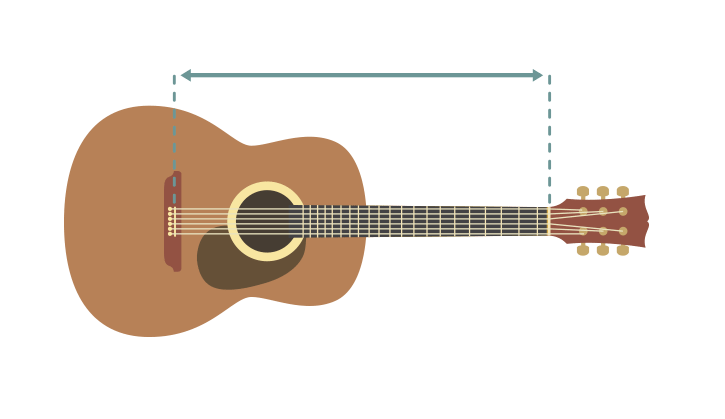
This is the measurement of the sounding length of a guitar string.
Scale lengths vary from approximately 630mm (24.8") to 650mm (25.6"). The majority of acoustics are at the longer end of the spectrum, although some small bodied instruments and 12 strings tend to be a bit shorter. The main difference for the player is that a shorter scale length feels "looser" under your figures at the same string gauge. However, as the strings get looser, there is a trade off with tone quality - so don't get hung up on this. Most Martins, Taylors, Lowdens, Collings and other high-end acoustics are long-scale instruments. That's good enough for us!
14-Fret Neck or 12-Fret Neck?
With most modern acoustic guitars, the neck joins the body at the 14th fret, but there are models available with larger sound chambers that join the neck at the 12th fret.
Some experienced fingerstyle players prefer these for their slightly improved resonance and sustain, but the shorter neck prevents access to some of the higher notes, which can make it harder to play solos and some open chords. Be aware that it can be difficult to find a case that that will fit properly, unless the manufacturers supply one.






